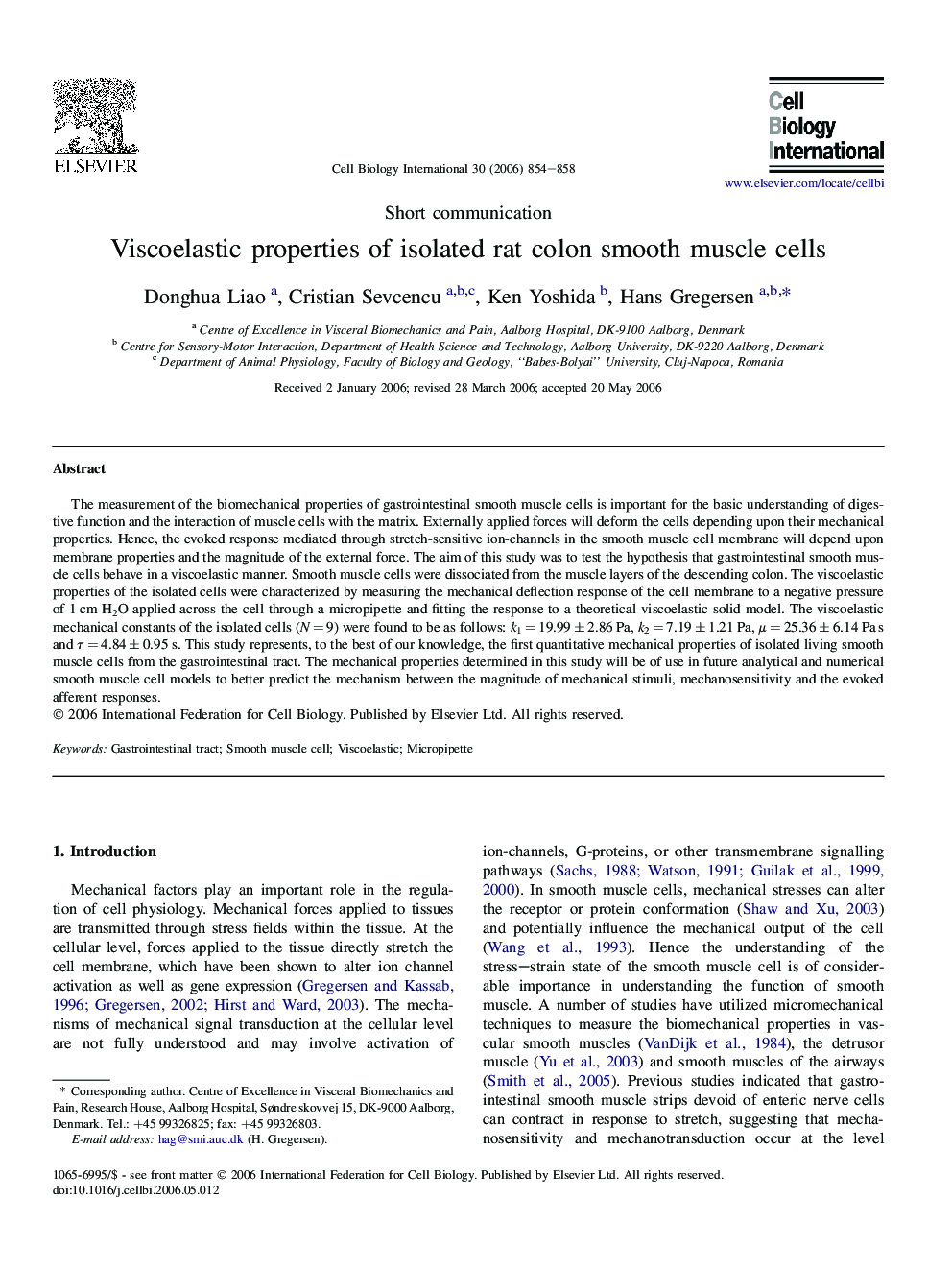| Article ID | Journal | Published Year | Pages | File Type |
|---|---|---|---|---|
| 2067830 | Cell Biology International | 2006 | 5 Pages |
Abstract
The measurement of the biomechanical properties of gastrointestinal smooth muscle cells is important for the basic understanding of digestive function and the interaction of muscle cells with the matrix. Externally applied forces will deform the cells depending upon their mechanical properties. Hence, the evoked response mediated through stretch-sensitive ion-channels in the smooth muscle cell membrane will depend upon membrane properties and the magnitude of the external force. The aim of this study was to test the hypothesis that gastrointestinal smooth muscle cells behave in a viscoelastic manner. Smooth muscle cells were dissociated from the muscle layers of the descending colon. The viscoelastic properties of the isolated cells were characterized by measuring the mechanical deflection response of the cell membrane to a negative pressure of 1 cm H2O applied across the cell through a micropipette and fitting the response to a theoretical viscoelastic solid model. The viscoelastic mechanical constants of the isolated cells (N = 9) were found to be as follows: k1 = 19.99 ± 2.86 Pa, k2 = 7.19 ± 1.21 Pa, μ = 25.36 ± 6.14 Pa s and Ï = 4.84 ± 0.95 s. This study represents, to the best of our knowledge, the first quantitative mechanical properties of isolated living smooth muscle cells from the gastrointestinal tract. The mechanical properties determined in this study will be of use in future analytical and numerical smooth muscle cell models to better predict the mechanism between the magnitude of mechanical stimuli, mechanosensitivity and the evoked afferent responses.
Related Topics
Life Sciences
Biochemistry, Genetics and Molecular Biology
Biophysics
Authors
Donghua Liao, Cristian Sevcencu, Ken Yoshida, Hans Gregersen,
